UNIT ONE:CAREER OPPORTUNITY CHOICE AND ENTREPRENEURIALPATHWAY
Key unit competence: To be able to make rational career choices
Introductory activities1. MUGWANEZA is a student at “Good health” school where she is pursuing a career in accounting. She has been invited to attend a young entrepreneurs’ forum where she will present on the topic “Possible career opportunities for Youths”
Question: Based on the knowledge and skills gained from senior three (S3) (Unit 2: Career opportunities), help MUGWANEZA to prepare the first slide of her presentation highlighting possible career opportunities in tourism.
2. Read the testimonies of different entrepreneurs and answer the questions that follow.
Mahoro, Kalisa and Berwa are three Rwandan young entrepreneurs. Mahoro has opened a women's shoe store in Bubiha sector. Her parents compelled her to start a shoe selling business with FRW500,000 as a startup capital.
On the other hand, Kalisa once paid a visit-to Joseph at his coffee shop business. Joseph testified that the Coffee shop is a profitable venture. He eventually received a loan of FRW 700,000 from Umurenge Sacco to open a coffee shop in his home town.
Berwa has aspired to start a profitable business, which has led him to participate in different business-related trainings and seminars. He also decided to purchase and thoroughly read the book titled: “Starting a successful business” by Michael J Morris, in order to improve essential business management skills. He was asked to work in her mother’s Supermarket where he was paid a monthly salary of FRW 200,000. After a year, he decided to open his own retail fruit shop in Bwiza city.
Questions:
What are the effects of each of the above entrepreneurial pathways?
3. People have different hobbies, preferences, and career aspirations. It is also observed that everyone undergoes a career path which requires continuous professional development. In your point of view, why is it important to conduct Continuous Professional Development?
1.1. Introduction to career opportunity and entrepreneurial pathway.
Activity 1.1
Analyze the picture the below and answer the questions below
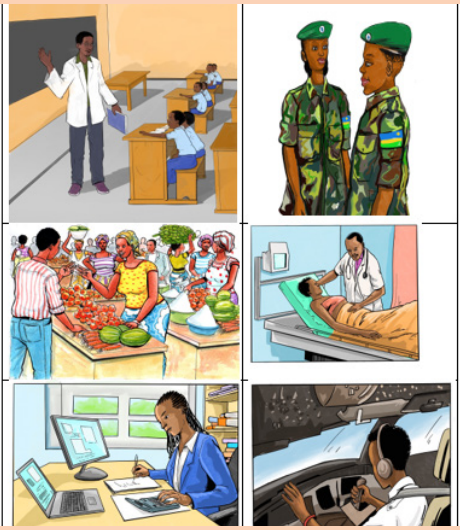
Fig. 1.1: Different career fields one can undertake
i) Mention the possible career fields illustrated above.
ii) Which possible career opportunities are in each area identified above?
iii) Analyze the career field you are interested in and give reasons as to why?
1.1.1. Career opportunity
A career is an undertaking a person gets involved in pursuit of their future or life goals. It also refers to what one wants to become in the future, for instance a doctor, accountant or engineer. On the other hand, an opportunity is a situation in which it is possible for someone to do something he or she wants to do. Career opportunity is any job, circumstance or situation which favors someone to pursue a given undertaking. This can further be defined as a particular job that may be a steppingstone to high ambitions.
Some of the factors to consider in choosing a career are skills and talents. Different jobs require different skills, talents and character. If your character does not contain elements of strong sense of ethics, consistent learning, emphasizing accuracy, organizational skills, sense of accountability, teamwork, trustworthiness and reliability, it may be difficult for you to become an accountant.
The following are examples of different careers with some of their recommended characteristics and skills.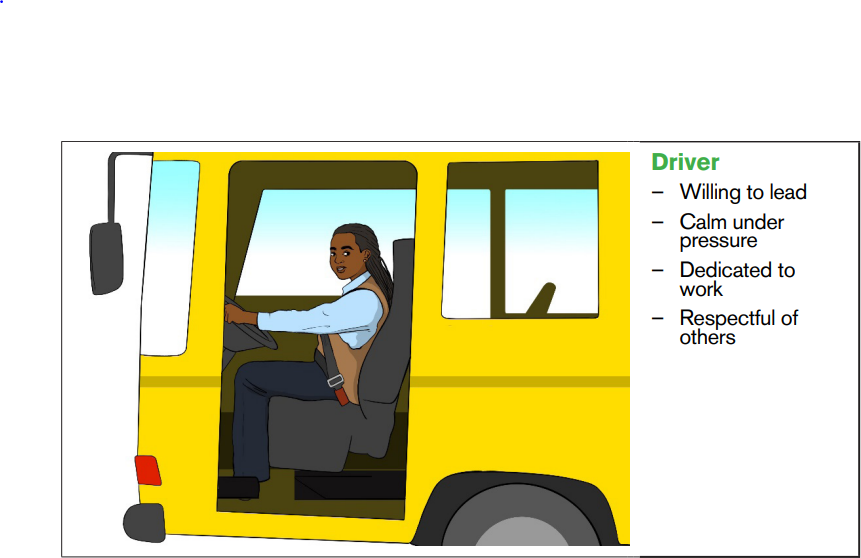
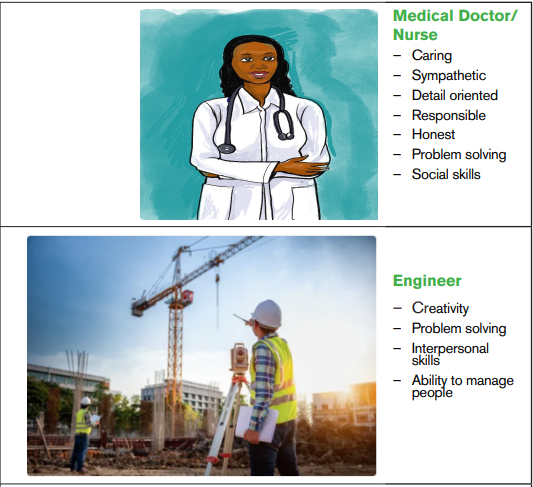
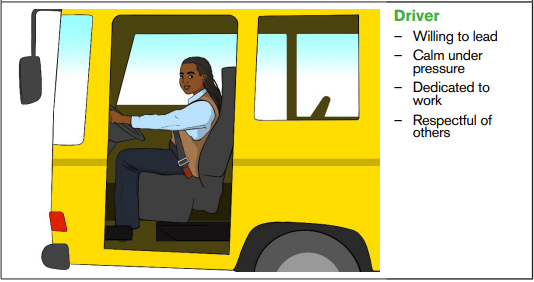
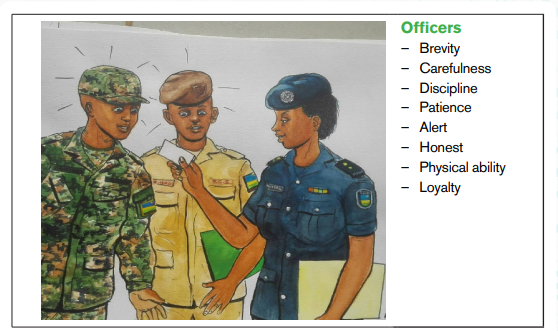
Fig 1.2: There are different careers, and each career requires different skills, talents and characters
1.1.2. Business as a career opportunity
Entrepreneurs play a great role in the life of any country. They are very big agents of community problem solvers.
In most countries, you always find people in the business field.
The following are some of the benefits and challenges of business as a career compared to other careers.
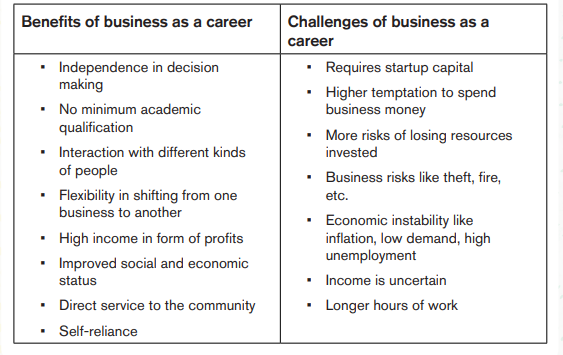
1.1.3. Entrepreneurial pathway
The entrepreneurial pathway is anyone’s route taken while pursuing an entrepreneurship journey. From developing your idea to launching your business, you will find resources for every step in your journey organized into four key stages. There is no need to move through the entrepreneurship pathway in a linear fashion. Often, learning from one stage will require revisiting a previous stage. It is up to you to adopt these considerations based on your business needs. Let us analyze these stages one by one:
Stage 1: Develop
Developing a business idea is the first step for any start-up. In this stage, you will find resources that will help you cultivate and identify good ideas, and then clearly define and communicate your business idea.
There are five basic types of business ideas:
1. Bringing an existing idea into a new market i.e., custom suits for a younger male demographic
2. Improving on an existing idea i.e., Modern produced computers imitate the idea of the computer inventor, Charles Babbage
3. Merging of two or more ideas i.e. A university that provides both education and restaurant services
4. Completely new idea i.e., Invention of a computer by Charles Babbage
5. Taking advantage of an opportunity using an existing idea, in an existing market i.e. Opening a shoe store in area where other shoe stores already exist
Stage 2: Explore
A good business idea is only a starting point for further exploration of a market. There are many factors you must make informed assumptions on when building your business. Ideally, you are testing these assumptions before launching. In this stage, you will find resources that will help you research and test different aspects of your business model. You also have to understand your customers and competitors at this stage. Customers are not always people. They can be governments, businesses and other organizations too. In designing your product or service, you have Experimental version 19 to account for your customer’s viewpoints, habits, needs and preferences. On the other hand, the value of your business is always relative to what your competitors are doing. Understanding their market position, offering and strategy should always be a prerequisite to crafting your own.
Stage 3: Build
Once you have validated your business idea through research and testing, it is time to build a plan. The more detailed and robust your planning, the higher your chances of securing financial support and ensuring business success. This stage will walk you through key components of building a marketing, operations and financial plan. Marketing, operations, organization plan , and financial plans are elaborated at this stage of the entrepreneurship pathway.
Stage 4: Launch
Once you feel comfortable with your planning and secure sufficient capital to execute, it’s finally time to launch your business. A key component of directing your business post-launch will be tracking progress against targets and managing growth. This last stage of the entrepreneurship pathway provides tools and resources for effective post-launch navigation.
At this fourth stage, the following essential activities must be set as priority:
• Measuring marketing Return on investment (ROI)
Measuring the impact of each marketing activity is essential to making better marketing decisions. As you learn what is working, and what is not, reallocate accordingly.
• Tracking financials
Your cash flow projection, as your other financial documents, should be something that is referenced and updated routinely. If your real-world financials differ significantly, make corrective adjustments to your strategy.
• Growth planning
Scaling your business operations is something that requires as much planning as starting up. Reference these resources for tips approaching growth strategically.
Application activity 1.1
MAJYAMBERE is a fresh university graduate who is dedicated to business as a career (specifically in agribusiness), a decision he made one year before graduation. He is currently looking for advice on how to start a successful agribusiness.
As a senior four year student with intensive knowledge and skills about career opportunities and entrepreneurial pathway, assist MAJYAMBERE to design a sound agribusiness pathway (by identifying key activities at each entrepreneurial pathway stages).
1.2. Entrepreneurial pathways of some successful entrepreneurs
Activity 1.2
Analyze the pictures below and discuss the entrepreneurial pathways of some famous entrepreneurs

Fig 1.3: Some famous successful entrepreneurs in Rwanda from different career fields Secondary sources: http://www.hope-mag.com https://igihe.com
1.2.1. Some successful entrepreneurs’ testimonies
We are going to learn about entrepreneurial pathways of some of the successful and impactful entrepreneurs in Rwanda.
a) SINA Gerard: A hard road to success
The following testimony is extracted and adapted from Hope magazine as posted on 13th November 2012. SINA Gerard is widely known as Rwanda’s foremost agri-business entrepreneur. His business include restaurants, bakeries, a juice and wine industry, a school and extensive land holdings. His ascent to the top, which started with almost nothing, is a typical rags to riches story in Rwanda. Sina Gerard’s inspiring story is exemplifies the opportunity that Rwanda’s agri-business sector may provide for a true entrepreneurs. Started with a small bakery in 1983. His parents were farmers and he baked products from the farm”, Sina recalls. After a while Sina Gerard ventured into higher forms of value addition by making juices. “Agashya” is likely the well known amongst the family of drinks by the entrepreneur while the “Akabanga” hot sauce a very popular item is now expected to break into -foreign markets. “Overtime my products became popular and which allowed enabled my businesses to grow”, he recalled during interview with Hope magazine. Once Sina Gerard’s company known as Enterprise Urwibwutso was placed on a sound footing, he diversified his portfolio to include new ones like manufacture of banana wines which he named “Akarusho”. Sina Gerard is a true business visionary in the business world. One approach to verify such a claim is his great trust in what education can accomplish for the long term viability of his fast his rapidly growing business. He believes that proper education for his employees is a key driver of taking his growing empire to the next level. Sina Gerard Educational Centre which is a modern educational institution that includes nursery, primary and secondary sections should be seen in this light. During his interview, he also revealed: “I finally thought it worthwhile to support the school project since I saw the need to be responsible for my employees and their families. They work for my company and I make a profit out of their work. The least I can do for them is to give back something to them. That is what I am doing with the school project. The schooling is free, and the children
can attend from nursery to high school”. He added; “It benefits the children and parents but in a way, it also benefits me. Because, I would rather have educated staff than uneducated ones”. If anything, education is at the forefront of propelling Enterprise Urwibutso since offering extension services to farmers that enables them to produce more for less is a cornerstone of the company’s success so far.
Gerard continued saying that there is increased capacity over time that gives room for exports something they never thought of initially. But that is now very possible since they brought in experiences from other countries that have enabled them to achieve the best results. This makes him very proud. His dream is that Rwandan farmers should aspire to deliver the best quality just the way others are doing it in the first world countries.
SINA said that the increased capacity of his contracted farmers places them at a vantage position of looking beyond his company for sustaining their livelihoods. Enterprise Urwibutso has state of the art plant production capacity. The sky is the limit for Enterprise Urwibutso. As a leader in the sector the deep reforms in Rwanda are likely to give SINA and his company an added boost.
b) Testimony of Mukarubega:
The woman who built a business empire with just FRW 5000 Hajati Zulfat Mukarubega, the founder and legal representative of Rwanda University Tourism College (RTUC), in Kicukiro District. She is one of the remarkable entrepreneurs in the education sector. Read and learn from her told story during an interview she had with The New times, and published on July 21, 2012 Her journey is a fairy tale characterized by perseverance and patience. Zulfat Mukarubega the founder of Rwanda Tourism University College (RTUC) has changed the face of the hospitality industry. Her story is not only inspiring, but also remarkable, as she is the brains behind the country’s first and only tourism university in Rwanda. She has touched the lives of many who have had a chance to pass through her gifted hands of entrepreneurshipAt a time when women had limited opportunities and were confined to the kitchen, Mukarubega defied the odds and ventured into entrepreneurship; with only Rwf 5000 she opened up a restaurant which later opened doors for success. The 56-year-old established RTUC in 2006 and though the journey wasn’t a bed of roses, she managed to build it from scratch into a recognized and prestigious institute it is today.
“Starting a business is full of ups and downs; things were tough in the beginning. Friends discouraged me not to start up something which has never even existed in the country but because I saw the need of what I intended to start, I never gave up. I started with twelve students of which seven dropped out and I remained with five. Getting lecturers wasn’t easy and making people understand the need to embrace the importance of hospitality was the hardest thing then,”
Mukarubega says. She traveled to South Africa and Kenya where she identified the customer care gap that existed within hotels and restaurants in comparison to Rwanda. This instantly sparked off her need to enhance hotel management and with all the challenges she faced, which of course being a woman and a mother was part of, Mukarubega never gave up, but rather strived for excellence.
Starting a business at the tender age of 19 was what shaped her into a powerful and extremely ambitious woman. In January 2012, Mukarubega was honored as the woman entrepreneur of the year by Rwanda Development Board (RDB). In addition, her business was recognised as the best Small and Medium Enterprise (SME) in the tourism sector. Since its inception, RTUC has blossomed into a successful college with over 3000 students and now has a second branch in Gisenyi which attracts students from as far as the Democratic Republic of the Congo, Burundi and Uganda.
The college has had graduations, and most of the graduates are employed while others have started their own businesses. The love for her country is what drives her to give back to society. “Most young girls finish secondary school and fail to continue to university. Out of desperation they end up into prostitution. As a mother, I saw the need to save our children from such misfortunes by equipping them with skills that will enable them to survive,” she says. Besides RTUC, Mukarubega plans to open up a home care training centre where house maids will be trained on how to raise children. “Women should believe in themselves; they should be innovative and think about the future because in Rwanda women have a high potential to realize their dreams and excel. The government has opened doors for us, we should use the opportunity,” she says.
Note: RTUC has changed its name to UTB (University of Tourism Technology and Business Studies).
For further information about other successful and hustling Rwandan entrepreneurs’ pathways, watch the following videos: 1. Dr. Nyirinkwaya Jean, Owner of La Croix du sud Hospital: https://2. Origène IGIRANEZA, O’Genius Priority Ltd: https://www.youtube. com/watch?v=liTmWLPJlFg/ 3. Marc Rugenera, founder and owner of Insurance company: 4.5. Charles MPORANYI, former owner of SORAS: https://www.youtube. com/watch?v=0dl5GjthII4/ 1.2.2. Characteristics of successful entrepreneurs Every individual entrepreneur possesses some characteristics that pushes him or her to success. According to the book titled “Starting a successful business” written by Michael Morris in 2008, there are some characteristics successful entrepreneurs share in common. Furthermore, every entrepreneur has some unique characteristics. The table below explains some generally accepted characteristics of a good entrepreneur versus examples from case studies.


With the examples above, it is noticed that entrepreneurs have some globally recommended characteristics of a good entrepreneur they share in common. However, as they pass through different journeys, everyone has some special qualities that pushes her or him to succeed in her/ his journey. Watch other suggested testimonies of Rwandan successful entrepreneurs to learn from them and compare their characteristics along their different journeys.

1.3.1. Sources of career information
In most schools, there are career teachers whose responsibilities are to help students choose subjects they should study in preparation for the career they wish to take on in future. It is also common in some schools to have a careers day. People in different careers go to schools and interact with students. This enables learners to get first-hand information about careers they may be interested in. Career choice is very important for every person. It requires serious analysis and consideration.
Choice of a career determines what we eventually become, what we do, how much we earn and our lifestyle. Even if we went to the same schools, we may sometimes end up taking different careers in future. Let us discuss different possible sources of career information hereafter. The sources of career information include, but are not limited to the following: • Schools: Schools are important sources for acquiring information about careers. Through career day events, learners interact with professionals, ask questions, and get to understand about their career of interest. It is important for learners to attend such events and ask as many questions as they can
. • Media, it includes newspapers, radios, TV sets, etc. Newspapers normally have columns and articles advising about different careers. Radio and TV broadcasters have talk shows about careers. Learners should get time to read newspapers as well as listen to radio and watch TV for career advice.
• Potential workplace: Potential workplace is a useful source of information. If you already have a job and you are seeking another for fear of being “right sized” by the present employer, then it’s better to seek information from those already employed by that organization or you may check on their website.
• Parents, friends and relatives: Families and friends can be extremely helpful in providing career information. While they may not always have the information needed, they may know other knowledgeable people and be able to put you in touch with them. These contacts can lead to an “information interview, which usually means talking to someone who can provide information about a career.
• Professional societies, trade groups, and labor unions: These groups have information on careers with which they are associated or which they actively represent. This information may cover training requirements, earnings, and listings of local employers.
• Personal skills, talent, and passion: The first place to start when looking for business ideas or opportunities is to look within you. Most people miss this greatest source of career information because of ignorance, laziness, and self-doubts. If you are talented or having a proven track record in a specific field, then it is time to analyze that skill or talent.
• Guidance and career counselors: Counselors can help you make choices about which careers might suit you best. Counselors can help you determine what occupations suit your skills by testing your aptitude for various types of work • Local libraries: These can be an invaluable source of information since most areas have libraries, they can be a convenient place to look for career information. Also, for those who do not otherwise have access to the Internet or e-mail, many libraries provide this access
• Tertiary institutions such as colleges, universities frequently have career centers with libraries of information on different careers, listings of related jobs, and alumni contacts in various professions.
• Exhibitions, expos and trade shows: Another means to get career information is to attend exhibitions and trade fairs. These are usually advertised on the radio or in newspapers.
• Listening to customer complaints: Complaints and frustrations on the part of customers have led to prospective career opportunities
• Surveys: You can carry out a survey online or offline. One can visit different people of different career fields and find out the advantages and disadvantages of each career field.
1.3.2. Examples of careers one can pursue When it comes to deciding about future occupation, one might find it helpful to review a comprehensive list of career options.
The following are some fields of career opportunities:
Agriculture is a profession dealing with growing crops and rearing animals. It is one of the careers with many employment opportunities. It ensures the safety and stability of the environment and people’s food supply and security.
Persons might be interested in working in agriculture or natural resources.
These jobs involve the processes from learning how to manage the earth’s resources to producing the food.
Some positions in agriculture career include food scientist, farmer, animal breeder and conservation scientist.
b. Education
Education refers to the act of acquiring new skills and knowledge either through formal or informal educational ways. Education takes place mostly at schools and training institutions to help learners to reach their potential. A number of rewarding career options are available in this field like education administrator (principal, assistant principal), teacher, school resources manager and counselor.
c. Health
Health is a very crucial sector since it deals with people’s lives. There are numerous career options which include a medical doctor, dentist, dermatologist, pharmacist, laboratory technician and nutritionist etc.
d. Security forces
This career involves keeping security of people and their properties. It is an important career because nothing else can be done without security. Some of the occupations in this career include military and police officers, private security companies such as TOPSEC, ISCO, etc.
e. Law
This career is concerned with establishing laws and assisting different people in legal matters such as contract formulation. The following are some of the career options available in this field like lawyer, judge, court clerk and paralegal.
f. Media
Media is a career, which involves collecting and disseminating information through different channels like radio and televisions. Different options are available in this field such as being a TV presenter, editor, photographer and journalist.
f. Media
Media is a career, which involves collecting and disseminating information through different channels like radio and televisions. Different options are available in this field such as being a TV presenter, editor, photographer and journalist.
g. Hotel and tourism
People love to relax, be comfortable, and have fun enjoy working in the hospitality industry. However, a person who is interested in providing people with good food, quality lodging, or engaging entertainment, has to discover a career in the hospitality and tourism industry. They may include tour guide, travel agent, housekeeper, bartender, chef and food service manager.
h. Commercial and manufacturing
Manufacturing refers to the process of transforming raw materials into finished products while commerce is the act of selling different products and services. People who enjoy working in commercial and manufacturing have to explore the wide range of careers available in this field such as purchase agent, machine operator, technician and engineers.
i. Construction Construction is a career
That is concerned with developing, building, and designing residences and commercial structures. This field also includes careers that involve maintenance and rehabilitation of buildings. It involves the following jobs like designer, architect, plumber, carpenter, building inspector and masons.
j. Information Technology careers
Information Technology is a rapidly growing field all over the world. As people perform more and more of their daily activities using computing technology, there is tremendous potential for growth in this field. However, people who want to be involved in this career have different options to choose from like being a software engineer, programmer, repairer, IT technician or web designer, etc.
k. Arts and communication
Creatively inclined people may be well suited for careers in the arts and communication. Artistic persons with a technological bent might consider career options that combine the two inclinations such as being a copywriter, artist, dancer or choreographer and fashion designer. In brief, the careers we may take are in many fields such as Education, Health, Security, Forces, Law, Media, Hotel and Tourism, Commercial and Manufacturing, Media, Construction, etc.

Many people decide their career when they are still in school. The choice of a career enables a student to choose subjects that are relevant to the desired career.
For instance:
– To be a journalist, literature and language subjects are important.
– To become a medical doctor, science subjects are important.
– To become an engineer, mathematics and physics are important subjects

1.4.1. Career guidance
Career guidance is the act of assisting students and adults to successfully choose a right career for themselves, manage and develop it. Having the right and accurate information is important in the choice of a career. The choice should be based on accurate information. Career guidance can be obtained from various sources:
1. Teachers
Teachers provide the best source of career information to learners because they spend most of their time with learners hence understanding their strengths, weaknesses, talents and skills. It is important for learners to consult their teachers at any time with ease for guidance about career development.
2. Parents
Some families have bias either against or in favor of certain careers and consequently encourage or discourage their family members to either take them up or leave them. Some people, therefore, choose to undertake certain careers because all their family members are taking the same career and are successful.
3. Career guidance counselors
Counselors are professionals trained to help people assess their strengths and weaknesses, evaluate their goals and values, and determine what they want in a career.
1.4.2. Maintaining and enriching one’s career
Continuous Professional Development (CPD) is a systematic process of planning for the future and of gaining experience and training relevant to the directions in which employees want to develop both with the current job role and in future career progression. Members of professional bodies are required to complete a certain amount of CPD as a condition of continuing membership.
This ensures that their knowledge and skills are always up to date and of a good standard. This, in turn, protects the interests of their clients and employers, as well as the standing and credibility of the professional bodies and the accounting profession. Experimental version 35 CPD can be pursued in several different ways. One may study for progression to membership of a professional body (like the ICPAR), or he or she may receive instruction, training or coaching in the workplace.
Self-development is also possible by a continual process of identifying weaknesses, seeking opportunities to practice, gathering feedback, and learning from mistakes. A key feature of the CPD approach is that the responsibility for development lies mainly with the individual, in collaboration with their employers, and other parties such as the professional bodies. You are responsible for maintaining CPD appropriate to:
• Your current job role: helping you to meet the requirements of the role better and ensuring that you stay up to date with the changing requirements of the role, and/or changing developments in your field.
• Your career aspirations: equipping yourself with the knowledge and skills you will require for higher-level roles and enabling you to seek more challenging job opportunities.
1.4.3. Importance of training and development
The ongoing development of skills and knowledge has significant benefits for the learners/trainees themselves, and for the organization in which they work.


1.4.4. Approaches to learning and development
Learning objectives will in most cases involve acquiring new skills and knowledge for current and future job challenges. So how will you go about this? It will require research into specific opportunities relevant to your SMART objectives, but some of the sources of CPD you may consider are as follows.
• Technical briefings and updates:
if you want to enhance your knowledge on a topic relevant to your work, or to keep your knowledge up to date, you might seek out technical briefings and updates. These may be provided by technical experts within your organization, or by external bodies. Government agencies such as the RRA, for example, may offer update seminars on topics such as VAT, payroll, income/corporate tax, and online reporting. Professional bodies such as ICPAR or the ACCA may similarly offer technical seminars and local branch events on topics relevant to their fields. You should also look out for technical briefings and updates provided by such bodies in printed form (mailed or emailed to subscribers) or posted on their websites. Your organization may keep a library of such resources.
• Training courses and seminars:
courses or seminars on technical and wider topics (e.g.: management skills) may be run internally by your organization. Alternatively, external courses can be researched by contacting a local college of further education or by using the internet. The key advantage of training courses is that they generally give you access to experts, in a structured environment which is designed to maximize learning. There is a disadvantage to “off the job” learning, however, in that it may not be easy to transfer or apply what you have learned in the workplace and of course it tends to be expensive for your organization. Experimental version 37
• Colleagues and coaches:
One of the most neglected sources of information and learning is work colleagues. They may be able to give you advice on training courses to attend or books or journals to read. You may also be able to learn new skills from colleagues, through instruction or coaching. You may find that you can also simply watch more experienced colleagues at work, to learn from their methods, procedures, techniques and behavior. This observation may take place informally as you work with colleagues, or on a more formal shadowing or coaching basis.
• On-the-job training: a common method of training employees is to provide support in the workplace. Methods of on-the-job training include:
- Demonstration/instruction: show the trainees to do the job and let them get on with it. It should combine telling a person what to do and showing them how, using appropriate media. The trainee imitates the instructor and asks questions.
- Coaching: The trainee is put under the guidance of an experienced employee who shows the trainee how to do the job. - Job rotation: the trainee is given several jobs in succession, to gain experience of a wide range of activities
- Temporary promotion: an individual is promoted into their superior’s position while the superior is absent
- Assistant to positions: a junior manager with good potential may be appointed as assistant to the managing director or another executive director.
- Action learning: a group of managers is brought together to solve a real problem with the help of an adviser who explains the management process that happens.
1.4.5. Personal Development Plan
Having come this far, you have all the tools necessary to formulate a more formal and systematic Personal Development Plan (PDP).
A PDP is a clear developmental action plan which, once agreed with the individual’s supervisor, act as a “learning contract” between them.
You may have your own preferences for formatting and recording action plans: timetables, diaries, checklists, and other methods mentioned earlier. Be sure to use any format recommended by your organization. In 38 Experimental version the absence of such guidelines, feel free to use whatever works for you but we recommend a simple, systematic format shown below.

Example:
Back at Inyange industries, having identified some immediate learning needs to improve your job performance, you prepare the following Personal Development for the next six months, which you agree with HRM (your designated learning superior).


i) Including your supervisor or line manager in the planning process
Personal Development Planning puts the responsibility on the individual to define development goals which are relevant to them, and to seek out learning opportunities which suit their needs, preferences, and opportunities. However, it is important to include your supervisor, line manager or designated coach in the process, so that they can:
• Check that your goals are SMART, and of potential benefit to the department and organization
• Check that the learning activities selected are suitable and cost effective for the organization
• Suggest learning methods and opportunities that you might not be aware of
• Mobilize learning opportunities and resources (e.g.: by recommending you for a training course, providing access to publications, or appointing a coach or mentor)
• Authorize and arrange the time off and expenditure that will be required for your training (including cover for your absences, where relevant)
• Plan to participate, as required, in your learning (e.g.: by acting as a coach or providing feedback) and in monitoring and reviewing your progress.
ii) Recording your CPD activity.
As we noted at the beginning, members of professional bodies are required to complete a certain number of hours of CPD, to ensure that they maintain their technical competence and up to date knowledge. You must therefore record any CPD activity you undertake, so that you can prove that you have fulfilled the requirements and updated your knowledge and skills appropriately. 40 Experimental version
Example:
POSITIVO BGH electronics encourages all accounting staff to maintain a CPD log template, which is reviewed alongside everyone’s Personal Development Plan. The company uses a simple pro forma log sheet for CPD activity.


